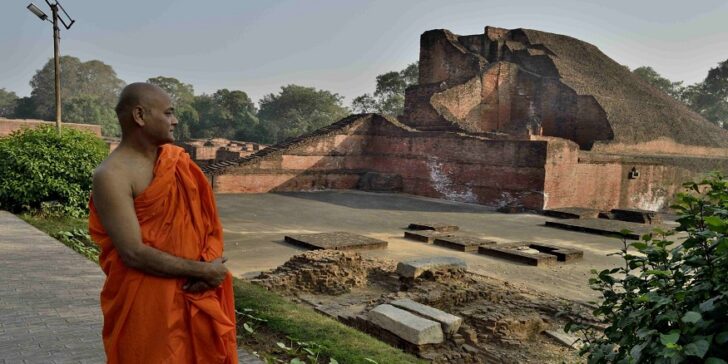
Nalanda University is widely popular across the world as the oldest educational institution of India and is currently established as an ancient center of higher learning in the Indian state of Bihar. The place has been in the historical discussions since forever, and it is believed that Nalanda University is the first biggest educational organization in India. If you are seeking admission to Nalanda University, you will find the following facts quite intriguing.
Existence since Centuries
The exact location of this divine heritage is approximately 88 KM away from Patna in the southeast direction. Historians claim that it was originally a Buddhist center of learning till 1197 CE. Even though there are a few vague explanations about its early foundation, it is believed that some buildings were built on the order of Mauryan emperor Ashoka the Great for the Buddhist learning center. Later, the Gupta Empire came into existence and enhanced the architectural layout for broader learning perspectives. Spread in a 14-hectare land, the university attracted international students from Persia, China, and Greece at that time.
Gradual Evolution
Nalanda University wasn’t a quick miracle that just came around to become the largest and the most successful learning center in the world. Buddha himself visited the place during the 5th century BC, and it took two more centuries to flourish into a fully-fledged educational institution. When Nalanda University was capacitated with 2000 teachers and 10000 students, Chinese scholars Xuanzang and Prajnavarnam visited the place.
The rich history of Nalanda University is segregated into two divisions. The first prominent division entails growth and development between the 6th and 9th centuries under the liberal culture domination inflicted by the Gupta age. Another part of the segregation covers drastic declination from the 9th century till the 13th century. That time specifically promoted Buddhism development in eastern India.
Now, let’s look on to several jaw-dropping facts about Nalanda University that enunciate the importance of this great institution in Indian history:
- The university that currently serves as the most reverent part of educational history was attacked thrice by different people. When Huns attacked the facility to destroy the entire establishment, the library was somehow restored by Skanda’s successors. Gaudas made the second invasion, but Harshavardhana restored the place with better arrangements. In 1993, Khilji attacked the university and deliberately destroyed all knowledge resources.
- The library containing the most crucial knowledge pieces of history was the essence of the institution. At that time, the library was called Dharma Gunj to sustain respect as the mountain of truth. When it was invaded by the Muslim attackers, it took more than 3 months for the entire library facility to burn down to ashes.
- The library of Nalanda University was distributed into three different buildings and nine stories, and each building has a name depicting the type of books they contained. These three buildings were Ratnodadhi (the ocean of jewels), Ratnasagara (the sea of jewels), and Ratnaranjaka (delighter of jewels).
- The invasion that happened thrice was devastatingly incorrigible as it was spread over a land of 150000 square foot meters. Historians explain that 90% of the ruins are still there in Nalanda University, unexcavated and certainly untouched!
- Nalanda University was the only international university at that time, and it maintained its supremacy for over 800 years. Narasimha Deva improvised the place to make it convenient for learners arriving from numerous countries. Imagining the destruction of knowledge gets more intense when you realize that over 9 million manuscripts were burnt during the attack.
It was sabotaged by the cruelest invaders of history, and yet Nalanda University continues to be a part of our glorious ancient Indian history as it still offers a lot to learn and explore.
